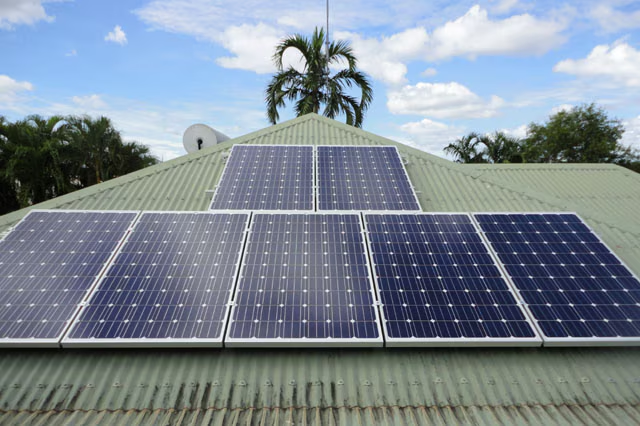Solar energy is gaining huge popularity in India. Many households and businesses are installing solar panels to save money and reduce dependency on the grid. But a common question arises — What happens if your solar panels produce more electricity than you consume?
In this article, we will explore how solar energy surplus is handled, what options you have in India, and how it affects your savings and the environment.
Understanding Solar Power Generation
Solar panels convert sunlight into electricity. The amount of power produced depends on:
- Number of solar panels
- Sunlight hours
- Panel efficiency
- Weather conditions
In many cases, especially during sunny days, your solar system may generate more electricity than your household or business requires at that moment.
What Happens to the Extra Power?
When your solar system generates extra electricity, it doesn’t go to waste. There are different ways this surplus power is handled:
1. Net Metering in India
Net metering is a government-approved policy where excess power from your solar system is sent back to the electricity grid.
- Your meter runs backward when you supply electricity to the grid.
- At the end of the billing cycle, the units you exported are adjusted against the units you imported.
- If you produced more than you consumed, you may receive credits or a reduced bill.
In states like Maharashtra, Gujarat, and Tamil Nadu, net metering policies are active and beneficial for solar owners.

2. Feed-in Tariff (FiT)
Some states allow you to sell extra solar power to the utility company at a fixed rate per unit.
- This is different from net metering because you are directly paid for the power you export.
- The rate depends on the state electricity regulatory commission.
3. Battery Storage
If you have a solar battery, the extra energy is stored instead of being sent to the grid.
- You can use stored power at night or during a power cut.
- This reduces dependency on the grid and diesel generators.
4. Curtailment (When No Storage or Net Metering is Available)
If your system is off-grid or there is no net metering, excess energy is simply not used once batteries are full. This is called curtailment.
- To avoid waste, many people size their solar systems according to their actual usage.
Benefits of Producing More Solar Power Than You Use
- Lower Electricity Bills – With net metering, your bill can reduce to almost zero.
- Extra Income – In states with feed-in tariff, you can earn money for surplus units.
- Environmental Impact – Every extra unit you produce reduces dependency on fossil fuels.
- Energy Independence – Stored power gives backup during outages.
Challenges with Excess Solar Power in India
While producing more power has advantages, there are also some challenges:
- Net Metering Policy Limits – Some states cap the capacity of solar systems for net metering.
- Low Feed-in Tariff Rates – In many areas, rates for selling power are low.
- Battery Costs – Storage solutions are still expensive in India.
How to Make the Most of Excess Solar Power
- Install a Net Metering System – This ensures your extra energy is credited to your account.
- Use Solar Batteries – Store energy for night usage or during blackouts.
- Shift High-Power Activities to Daytime – Use washing machines, air conditioners, and pumps when solar production is high.
- Consider EV Charging – Use surplus energy to charge electric vehicles.
Indian Policies on Excess Solar Power
- Maharashtra – Net metering available up to 1 MW capacity.
- Gujarat – Solar rooftop program with high adoption and easy grid connectivity.
- Tamil Nadu – Attractive solar incentives and feed-in tariff.
- Delhi – 100% solar net metering with monthly billing adjustments.
These policies keep changing, so it is important to check the latest regulations from your state electricity board before installing solar.
Impact on ROI (Return on Investment)
Producing more than you use can reduce your solar payback period.
- A typical residential solar system in India pays back in 4–6 years with net metering.
- Businesses can recover costs faster if they have high daytime usage and export surplus power.
FAQs – Excess Solar Power in India
Q1: Can I sell solar power to the government in India?
Yes. Some states allow feed-in tariff, where you can sell surplus power at a fixed rate.
Q2: Will my utility company pay me for extra solar power?
Only if your state policy allows feed-in tariff. Otherwise, you may receive credits through net metering.
Q3: What happens if my solar battery is full?
If you are off-grid, the excess power is not used. If you are on-grid, it may go to the grid.
Q4: How much extra power can I produce?
It depends on your solar capacity and state policy. Some states limit the system size for net metering.
Q5: Is producing extra solar power wasteful?
Not if you have net metering, feed-in tariff, or battery storage.
Final Thoughts
Producing more solar power than you use can be a big advantage in India, especially with the right policies and technology in place. By using net metering, battery storage, or feed-in tariff, you can make the most out of your solar investment.
If planned well, your solar system can reduce bills, give you backup during outages, and even generate income — all while contributing to a greener India.










